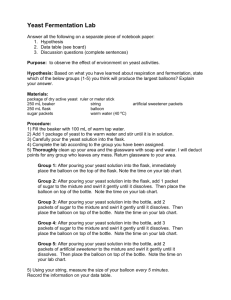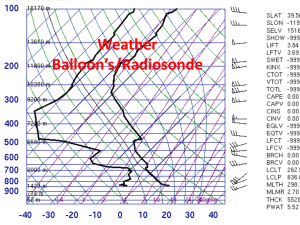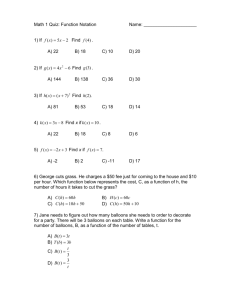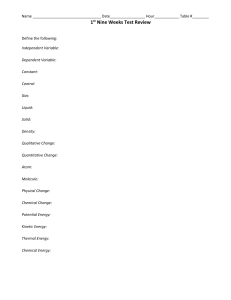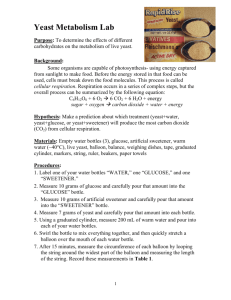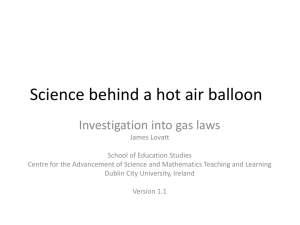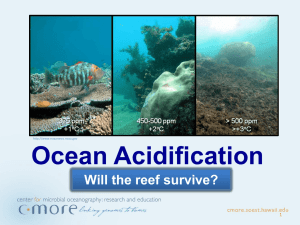Carbon Dioxide rev - Georgetown College
advertisement
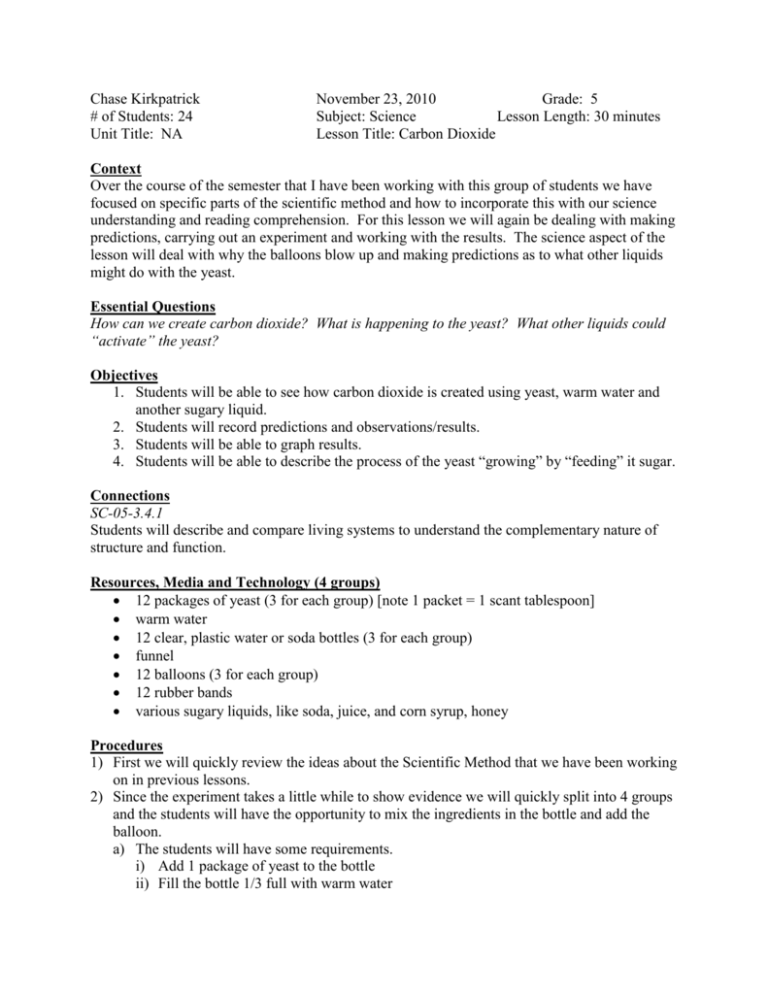
Chase Kirkpatrick # of Students: 24 Unit Title: NA November 23, 2010 Grade: 5 Subject: Science Lesson Length: 30 minutes Lesson Title: Carbon Dioxide Context Over the course of the semester that I have been working with this group of students we have focused on specific parts of the scientific method and how to incorporate this with our science understanding and reading comprehension. For this lesson we will again be dealing with making predictions, carrying out an experiment and working with the results. The science aspect of the lesson will deal with why the balloons blow up and making predictions as to what other liquids might do with the yeast. Essential Questions How can we create carbon dioxide? What is happening to the yeast? What other liquids could “activate” the yeast? Objectives 1. Students will be able to see how carbon dioxide is created using yeast, warm water and another sugary liquid. 2. Students will record predictions and observations/results. 3. Students will be able to graph results. 4. Students will be able to describe the process of the yeast “growing” by “feeding” it sugar. Connections SC-05-3.4.1 Students will describe and compare living systems to understand the complementary nature of structure and function. Resources, Media and Technology (4 groups) 12 packages of yeast (3 for each group) [note 1 packet = 1 scant tablespoon] warm water 12 clear, plastic water or soda bottles (3 for each group) funnel 12 balloons (3 for each group) 12 rubber bands various sugary liquids, like soda, juice, and corn syrup, honey Procedures 1) First we will quickly review the ideas about the Scientific Method that we have been working on in previous lessons. 2) Since the experiment takes a little while to show evidence we will quickly split into 4 groups and the students will have the opportunity to mix the ingredients in the bottle and add the balloon. a) The students will have some requirements. i) Add 1 package of yeast to the bottle ii) Fill the bottle 1/3 full with warm water 3) 4) 5) 6) 7) 8) iii) Add sugary liquids to the three containers (may use different amounts and liquids) Students will then put a balloon over the opening of each bottle. The balloon that inflates the most will show which liquid produces the most carbon dioxide. After the experiment is set up I will have the students make predictions about each of the bottles and what they think will happen depending on their mixtures. As a class we will discuss why the balloons inflate and how CO2 relates with the yeast. Students will develop other questions in which they could answer and experiment with the same basic principle of the experiment. Students will begin to write down observations that they notice from the different balloons and yeast mixtures. Students will graph results of how long it takes before the balloons reach a predetermined size using the classroom clock (rounding to the nearest minute). a) We will all have one blown up balloon to measure the rest of the balloons to which is our “ideal balloon” based on the time for the experiment. b) Since we do not have much time to let the balloons sit for an extended amount of time, I will have already done the experiment once in a 20 minute time frame to find the “ideal balloon” size.
